
Immaculate Conception Church
St. Helena, Nebraska
Wangerin-Weickhardt Organ, Op. 89, 1911
Restorative Repairs by Dobson Pipe Organ Builders, 2010

Pre-restoration view.
|
GREAT
|
|
|
|
|
| 8' |
|
Open Diapason |
1-17 in façade
|
61 pipes |
| 8' |
|
Flauto Amabile |
1-12 stopped, rest open wood
|
61 pipes |
| 8' |
|
Dulciana |
|
61 pipes |
| 4' |
|
Flute d’Amour |
1-12 wood, rest metal
|
61 pipes |
|
|
Great Separation |
|
|
| 4' |
|
Great to Great |
|
|
| 16' |
|
Swell to Great |
|
|
| 8' |
|
Swell to Great |
|
|
| 4' |
|
Swell to Great |
|
|
|
|
 |
|
|
|
SWELL (enclosed)
|
|
|
| 8' |
|
Violin Diapason |
1-12 open wood, rest metal
|
61 pipes |
| 8' |
|
Stopped Diapason |
|
61 pipes |
| 8' |
|
Salicional |
|
61 pipes |
| 8' |
|
Vox Celestis |
TC
|
49 pipes |
| 4' |
|
Flute Harmonic |
25-61 harmonic
|
61 pipes |
|
|
Swell Separation |
|
|
| 16' |
|
Swell to Swell |
|
|
| 4' |
|
Swell to Swell |
|
|
|
|
Swell Tremolo |
|
|
|
|
 |
|
|
|
PEDAL
|
|
|
|
|
| 16' |
|
Bourdon |
|
30 pipes |
| 8' |
|
Bass Flute |
ext. of Bourdon
|
12 pipes |
| 8' |
|
Great to Pedal |
|
|
| 8' |
|
Swell to Pedal |
|
|
• • •
Removal of the Bellows and Other Work
October 2010
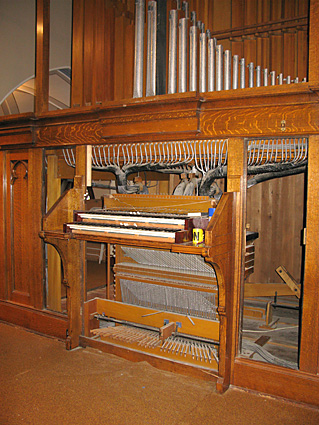
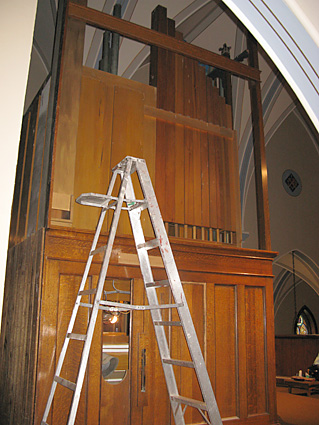
Only low C of the Pedal Bourdon remains in the side of the case. The large wood pipes in the upper center are the basses of the Swell Violin Diapason, which stand outside of the swell box.
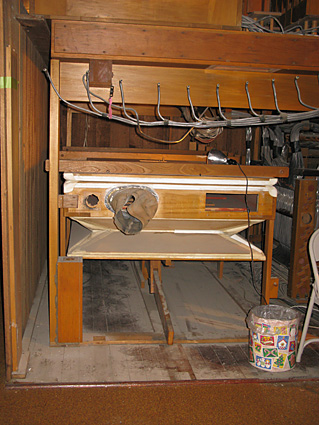
Rather unusually, the bellows have parallel rather than hinged (cuneiform) feeders.
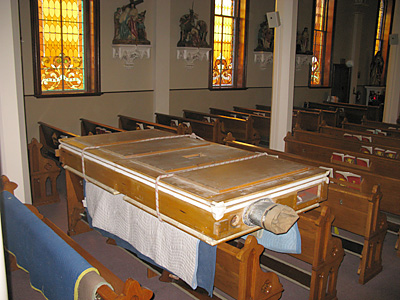
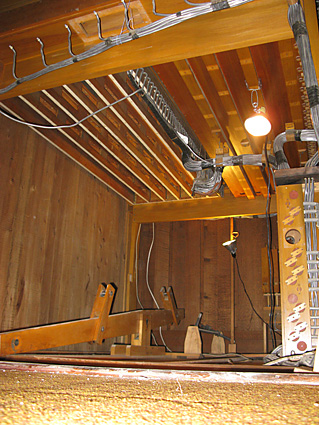
A view of the undersides of the Swell and Great windchests, which are built according to George Weickhardt’s design, Patent No. 863,768.
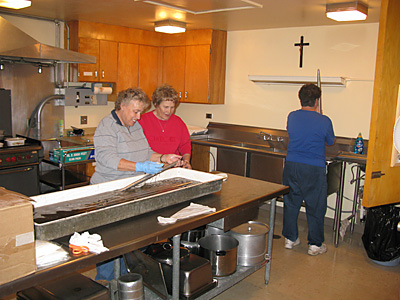
A number of parish volunteers washed the metal pipes.
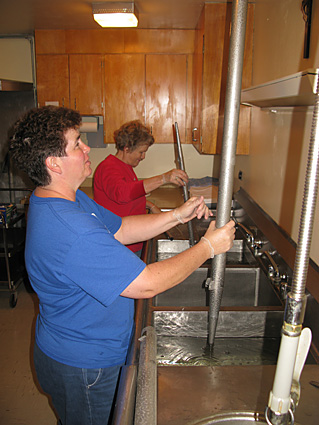
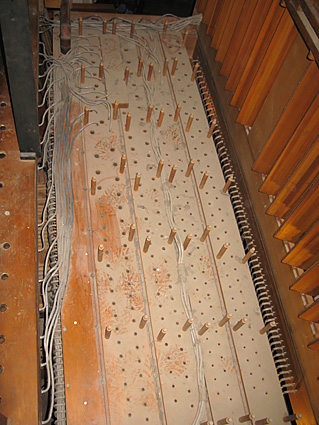
The toeboards of the Great windchest before cleaning.
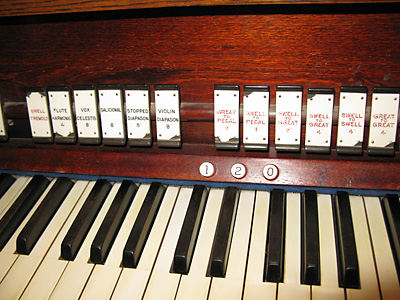
Many of the ivory plates on the tilting tablets were cracked due to unequal expansion of the ivory and the Bakelite tablet. We found only one broken ivory chip in the dust under the keys.
• • •
Restoration Work in the Shop
November 2010
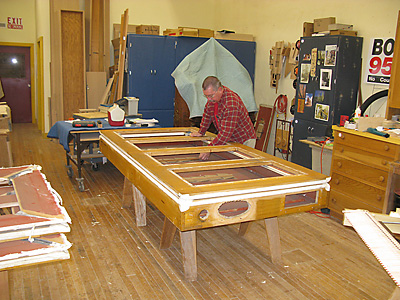
Bob Savage disassembles the reservoir and feeders. The reservoir measures 48" x 96" and has two feeders.
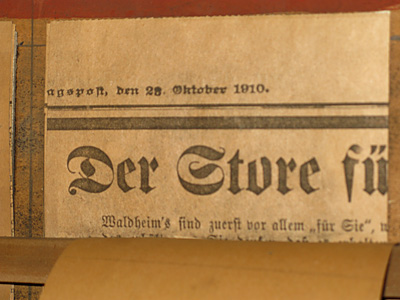
Papers from the Milwaukee Sonntagspost, dated 28 October 1910, the very day the bellows were removed for restoration in St. Helena one hundred years later.
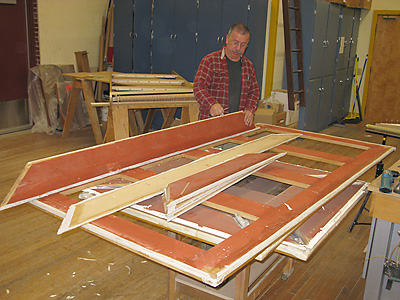
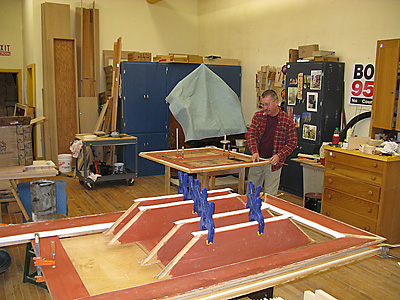
Gluing the rib hinges.
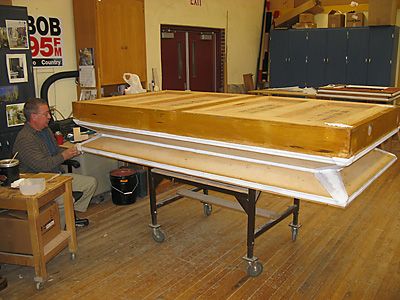
Leathering the gussets.
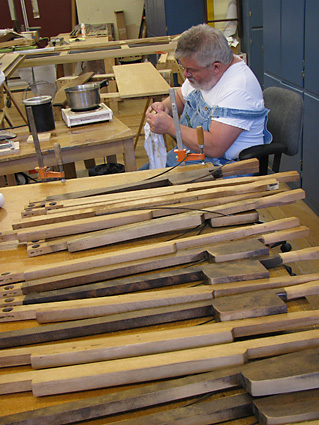
Art replacing the leather between the pedal keys and their guides.
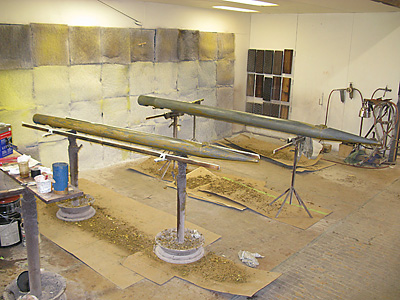
The original gold paint had been obscured by additional paint applied by church decorators. We elected to strip the pipes and repaint them.
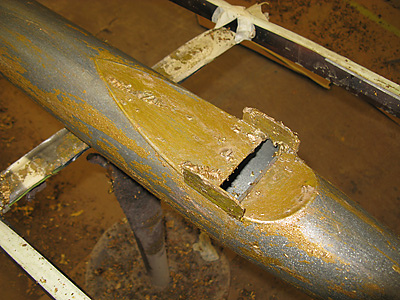
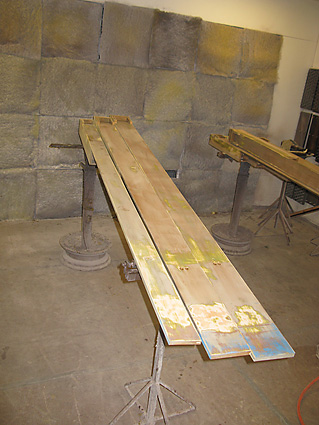
Likewise, the Bourdon pipes that stand at the sides of the case were also painted gold, and repainted at a later time.
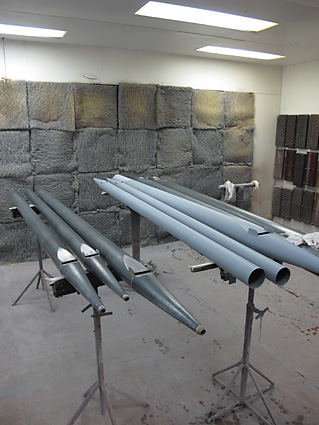
The stripped pipes were primed, then painted with gold lacquer.
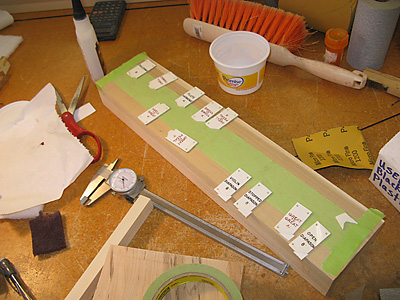
The ivory plates from the tilting tablets were removed, and salvaged ivory from old keyboards was glued to replace broken chips.
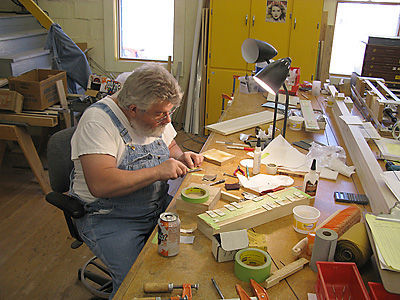
Art restoring the ivory plates.
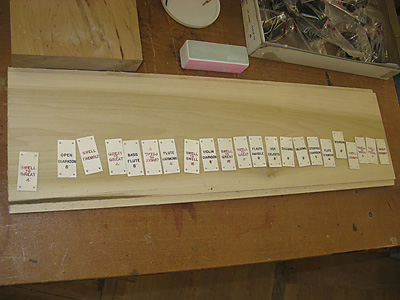
The finished ivories.
• • •
Reinstallation of Restored Parts
December 2010
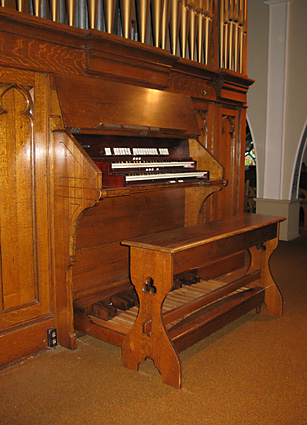
The console.
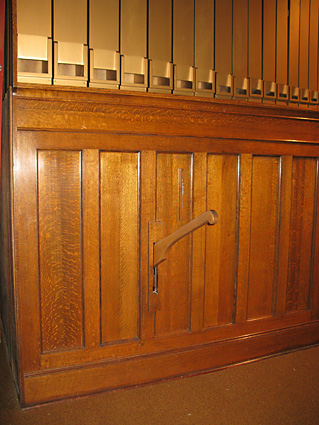
The pump handle and the newly-repainted Bourdon pipes above.
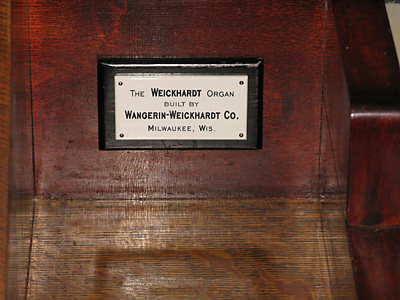
The original nameplate had been removed by persons unknown. Early Wangerin organs have a variety of nameplate styles, and the exact design of Op. 89’s is unknown. This plate is a modified replica of the one fitted to Op. 151 in Corning, Iowa, reduced in physical size to match the impressed outline of the original, which was still visible on the black backing plate.
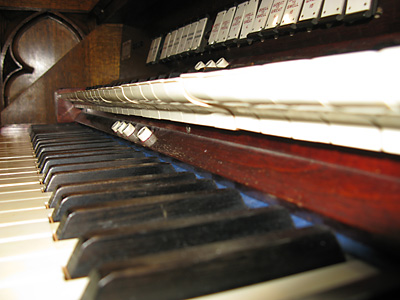
The console is supplied with two pistons and a cancel per division, as well as a general cancel, all of which operate pneumatically and are not double acting, i.e., they do not move the tablets or change registrations already drawn. In the photo above you can see the Swell divisionals above the Swell keyboard, and the Great divisionals and general cancel above the Great keyboard. Each Divisional 2 is fixed as a forte, drawing all stops in the division, but each Divisional 1 can be set within the organ by adjusting the position of small dowels in a type of pneumatic setterboard.

The repainted façade pipes and cleaned case.
• • •
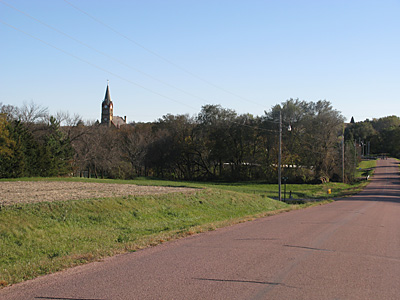
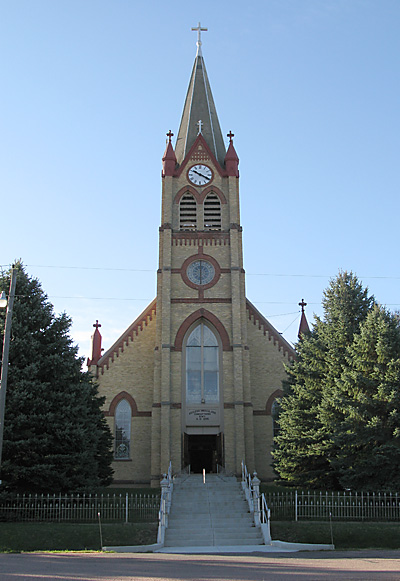
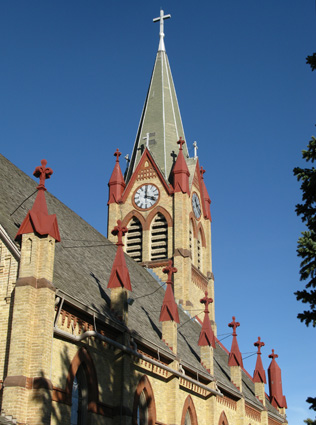
A collection of photographs, primarily of the organ’s mechanism, can be found on John Panning’s Facebook page.



































